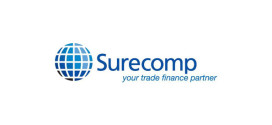 EVAN GOLDSTEIN, global head of renminbi solutions at Deutsche Bank, explores the growing prominence of the renminbi and the benefits and challenges of its use as a trade settlement and treasury management currency.
EVAN GOLDSTEIN, global head of renminbi solutions at Deutsche Bank, explores the growing prominence of the renminbi and the benefits and challenges of its use as a trade settlement and treasury management currency.
While China’s renminbi (RMB) has been around for nearly 70 years since it was first introduced in 1948, its role in the international arena has been limited – until now.
In recent years, the currency, as a direct result of Chinese policy changes aimed at opening up the economy, has surged onto the global stage and firmly marked its place as not just “one to watch” but a currency to actually use, with immediate effect.
Indeed, China’s rampant economic growth, burgeoning middle class population and importance in global trade has helped its currency make significant headway along the path to true internationalisation. And this in turn, makes it all the more important that corporates all over the world are both fully aware of the RMB’s continued progress, and are prepared to reap the benefits of using the currency for both trade and treasury purposes.
Certainly, the currency remains on a strong upward trajectory. China’s current five-year plan (running up until 2015) explicitly details the country’s ongoing efforts to further improve convertibility and loosen residual FX restrictions. This ambition ties in with recent policy changes, including the significant easing of documentary requirements (allowing RMB transactions to be conducted electronically) and the continued widening of the currency trading band, with the latest move (in March 2014) bringing this to two per cent in both directions.
Such measures are demonstrably working, with international interest in RMB use greater than ever. The RMB is now the eighth most-traded world currency, with its use having tripled between 2010 and 2013 to reach an impressive $120bn per day. The rise continues, with the value used globally going up by 15 per cent in the last month of 2013; more than double the average increase seen in other currencies. Furthermore, its use as a trade finance currency (for example as the underlying currency for Letters of Credit) is already well established; the RMB shot past the euro last year to become the second-most utilised currency for trade finance.
This year – to join the ranks of Taiwan, Singapore and Malaysia – London and Frankfurt were appointed as the first ex-Asia locations for RMB clearing houses, giving local corporates direct access to the onshore currency market, allowing direct foreign-exchange deals (removing the previous need to exchange through the US dollar) and improving efficiency and liquidity.
New agreements across the globe
Furthermore, a steady stream of new agreements are being reported, and the reach of the currency continues to stretch across the globe, with the top offshore RMB centres (excluding China and Hong Kong) now those based in Singapore, UK, the United States, Taiwan, France, Australia, Germany and South Korea.
Complementing such policy-driven advances is the strength added by China’s growing economic influence. As economic uncertainty continues to trouble Western markets, China has fuelled deepening “south-south” trade flows – meaning emerging markets such as Africa, for whom China is the largest trading partner, may be quick off the mark to adopt RMB-denominated trade.
That said, even in Europe, the currency’s progress has been clear – with bilateral trade flows settled in the RMB poised to triple in the next three years (accounting for 5-6% of China’s total global trade). And the Middle East is set for even greater ties with China, with McKinsey, the consulting group, predicting that China-Middle East trade flows will reach US$250-500 billion by 2020.
As RMB internationalisation continues, it is unsurprising that many corporates are looking to take advantage of the currency, for both trade settlement and treasury management purposes. For those who have so far shied away from migration, however, the time has now come to explore the currency’s possibilities, as the benefits are numerous.
Indeed, any corporate with a connection with China – whether via trade flows, onshore branches or subsidiaries, or where RMB payments constitute a significant portion of treasury risk – migration to the RMB can bring both practical and strategic advantages.
For example, corporate treasurers from “onshore” (domestic Chinese) companies with the ability to trade in the RMB will be able to remove any foreign exchange aspects to their trade with other markets, thereby eliminating the costs and risks associated with currency exchanges and hedging, as well as the added complexity and workflow inefficiency of such efforts.
Furthermore, corporates with the ability to conduct trade in the currency are likely to enjoy improved terms with their Chinese counterparts – in turn improving working capital. For example, by offering the attractive option of trading in RMB, offshore corporates will be in a stronger position to negotiate better terms with regards to Days Payable Outstanding (DPO) and Days Sales Outstanding (DSO). And the willingness to trade with Chinese corporates in their own currency may also help offshore firms further penetrate the onshore market.
A further positive is that the benefits work in both directions, in that Chinese corporates trading with RMB-capable foreign counterparts can cut transaction costs by between three and five per cent – a quantifiable benefit to RMB-denominated trade.
Finally, now that many of the documentary requirements for RMB-denominated trade have been waived, and RMB payables and receivables can be processed electronically, it is easier than ever to settle in the currency, streamlining treasury processes, improving efficiency, facilitating data tracking and reporting, and tying in with corporate treasurers’ fundamental desire to increase levels of automation.
Understanding all the challenges
The case for switching, then, is undeniably strong. But, as with any move to a new currency, there are a number of complexities to be considered and navigated. And the RMB is, perhaps, more complex than most.
For example, an unusual characteristic of the renminbi is that while it is a single unified currency, in actuality FX controls and regulations mean there are two distinct pools to contend with. While “CNY” is the official ISO code for the RMB, in practice it signifies only the onshore currency, separate to the offshore “CNH” currency pool. These two pools cannot be intermingled, and the official code does not allow for differentiation between them within a treasury system or payment workflow.
Additionally, while the offshore rate is determined by the market, the onshore rate is regulated by the central bank, with consequently different interest and exchange rates for both. Corporates looking to leverage the RMB must, therefore, ensure their operating systems can distinguish between the two pools.
In addition, looking at the FX market, the RMB in fact consists of three tiers: onshore CNY, offshore CNH and non-deliverable forwards (NDF), too. NDFs are outright forward contracts through which counterparties settle the differences between the contracted NDF price/rate and the prevailing spot price/rate on an agreed notional amount.

Although the three markets are closely correlated, being based on the same underlying currency, they track different spot levels, including the London Interbank Offered Rate (LIBOR), Hong Kong Interbank Offered Rate (HIBOR) and the Shanghai Interbank Offered Rate (SHIBOR) Shanghai – which are influenced by different funding activities.
Furthermore, as it is China’s policy changes that have kick-started and steered the RMB’s increasing internationalisation and convertibility, corporates will have to ensure they can keep fully abreast of upcoming regulatory changes, and can anticipate the affects of the currency’s ongoing evolution. For example, the widening of the trading band by the People’s Bank of China (PBOC) has introduced added volatility to the currency, and such moves could result in near-term upside risk on USD/RMB in onshore and offshore spot and forwards markets, and in upside risk on renminbi foreign exchange volatility. At the same time, the remaining limitations on the currency must be understood and accommodated.
Certainly, full convertibility has yet to be achieved – but with continuous moves toward internationalisation, it may be just over the horizon. For example, we will likely see the trading band, widened in March of this year, relaxed further – possibly to +/-3 per cent in the next two years. Other measures promoting offshore activity (such as the cross-border intercompany loan pilot scheme) or to test new measures (such as the China (Shanghai) Pilot Free Trade Zone) will hasten the RMB’s journey towards a truly global currency.
The practicalities of migration
There is no doubt that the RMB holds a number of complexities. And even for those corporates ready to take on the currency, migration will not be immediate nor straightforward.
First and foremost, treasurers will need to secure buy-in from key stakeholders; this will involve, amongst other things, understanding completely the nuances of the situation and what switching to the RMB involves, and educating those involved.
Secondly, treasurers may need to upgrade their infrastructure, beginning with treasury and accounting systems. That said, the degree of new technology needed will depend on each corporate’s particular set-up – there can be no “one-size-fits-all” approach.
In all of this, the support, expertise and capabilities of an experienced banking partner will be key. At the first step, the right provider can assist chief financial officers (CFOs) and treasurers in determining whether RMB capabilities will be profitable for their operation – by calculating the scope, cost and disruption of the challenge and how to minimise the same – and how the benefits can be best-leveraged.
Corporates of all sizes should look to their banks to advise at every stage of the process: from an educative sense (such as regulatory updates, and introducing the migration concept to internal stakeholders) to more practical assistance with regard to solutions, cross-border movements and even the setting up regional treasury centres, for example.
Committing to the future
While exactly what RMB migration entails will vary for each organisation, there is one aspect here that is in no doubt, and that is the growing importance of the RMB, and the resulting need to embrace its use.
RMB cross-border trade will increase by 50 per cent this year alone, to reach RMB6 trillion; approximately 20 per cent of China’s global trade volume. As China’s growth continues – expected to reach 7.5 per cent in 2015, according to the World Bank – and China cements its position on the world stage, the RMB will in turn gain ever greater strategic and practical importance.
The challenge of readying an organisation to trade in the RMB should not be underestimated – but neither should the benefits. More than this, for those corporates that don’t proactively seek timely RMB migration, competitive market pressures may soon make such a move inevitable; so better to be ahead of it.
Certainly, corporates that fail to consider the best time and strategy for implementing such capabilities may soon find themselves missing out, on both trade and internal treasury advantages. But with strong support from a bank committed to the RMB and all that the currency entails, this change is possible. The RMB’s role will only continue to grow, and those early to exploit it will reap the rewards.
 Cash And Trade Magazine For Cash and Trade professionals in the Middle East
Cash And Trade Magazine For Cash and Trade professionals in the Middle East




